San Diego Old Town Trolley Names
Old Town Trolleys
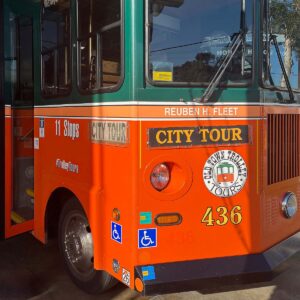 Reuben Fleet
Reuben Fleet
(March 6, 1887 – October 29, 1975)
Reuben H. Fleet was a visionary entrepreneur and aviation pioneer with a profound connection to San Diego, leaving a mark on the city’s aerospace and technological landscape. Born in 1887, Fleet’s impact on the region began in the 1930s when he founded the Consolidated Aircraft Corporation, later known as Convair. This aerospace company became a cornerstone of San Diego’s emerging aviation industry. Under Fleet’s leadership, Convair played a pivotal role during World War II, producing aircraft crucial to the Allied forces’ success. Fleet’s dedication to technological innovation extended beyond wartime efforts. Post-World War II, Convair continued to thrive, contributing significantly to the growth of San Diego as a hub for aerospace and defense technology. Fleet’s foresight and commitment to progress made a lasting impression, shaping the city’s identity as a center for cutting-edge research and development. In honor of his legacy, the Reuben H. Fleet Science Center was established in Balboa Park in 1973. This science center stands as a testament to Fleet’s commitment to education and exploration.
The facility provides interactive exhibits, educational programs, and a planetarium, fostering a sense of curiosity and discovery among visitors. Reuben H. Fleet’s impact on San Diego transcends his entrepreneurial success; it underscores his role in transforming the city into a leading hub for aerospace innovation and scientific exploration, leaving a legacy that continues to inspire generations.
 Juan Cabrillo
Juan Cabrillo
(March 14, 1499 – January 3, 1543)
Juan Rodríguez Cabrillo, a 16th-century Spanish explorer, is a pivotal historical figure. In 1542, Cabrillo embarked on an expedition commissioned by the Spanish crown to explore the uncharted territories of the Pacific coast of North America. During this journey, he became the first European to set foot in what is now California. Cabrillo arrived at the shores of San Diego Bay on September 28, 1542. This momentous event marked the first European exploration of the California coast. Although Cabrillo’s stay in the area was brief, his expedition paved the way for further European exploration and eventual Spanish colonization of California. The significance of Juan Cabrillo is now commemorated at Cabrillo National Monument, located on the Point Loma peninsula. The monument, established in 1913, honors Cabrillo’s exploration and serves as a historical and cultural landmark. Visitors to the site can enjoy breathtaking views of San Diego, explore the Old Point Loma Lighthouse, and learn more about Cabrillo’s journey through informative exhibits.
 Babcock & Story
Babcock & Story
The Babcock & Story Bar holds a significant place in San Diego’s historical and cultural landscape. Located within the Horton Grand Hotel in the heart of the Gaslamp Quarter, the bar pays homage to the architectural firm responsible for the hotel’s design and construction in the late 19th century. While the name “Babcock & Story” refers to the architectural firm that played a crucial role in shaping the hotel’s Victorian-era aesthetic, the bar itself has become an iconic establishment within San Diego’s vibrant nightlife scene. The Babcock & Story Bar offers patrons a unique blend of old-world charm and modern sophistication. Housed within the historic walls of the Horton Grand Hotel, the bar exudes an ambiance of timeless elegance, with its rich wood furnishings, stained glass windows, and intricate architectural details transporting visitors back to a bygone era. Whether enjoying a signature cocktail crafted by skilled mixologists or savoring a selection from the extensive wine and spirits menu, guests at the Babcock & Story Bar are treated to an unforgettable experience steeped in history and tradition. Beyond its exquisite décor and impeccable service, the Babcock & Story Bar serves as a gathering place for locals and tourists alike, fostering a sense of community and camaraderie.
Additionally, the bar’s central location in the Gaslamp Quarter makes it a popular destination for visitors exploring San Diego’s vibrant downtown district, further solidifying its role as a cultural landmark within the city.
 Dr. Jonas Salk
Dr. Jonas Salk
(October 28, 1914 – June 23, 1995)
Jonas Salk, the renowned virologist and medical researcher, forged a significant connection with San Diego that left an enduring impact on both the city and the global scientific community. In the early 1960s, Salk, already celebrated for developing the first effective polio vaccine, established the Salk Institute for Biological Studies in La Jolla, a coastal community within San Diego. The institute, founded in 1963, stands as a testament to Salk’s commitment to advancing scientific knowledge and fostering interdisciplinary research. The Salk Institute, designed by the esteemed architect Louis Kahn, became a hub for groundbreaking research in various scientific disciplines, attracting some of the brightest minds in biology, chemistry, and related fields. Salk envisioned the institute as a place where scientists could collaborate freely, unencumbered by traditional departmental divisions, and pursue innovative research that would lead to transformative discoveries. The institute’s distinctive architecture overlooking the Pacific Ocean has become an iconic symbol of scientific excellence and architectural ingenuity. Jonas Salk’s influence extended beyond the walls of the Salk Institute, as he actively engaged with the San Diego community.
He sought to create an environment where scientific exploration and community well-being went hand in hand. Salk’s dedication to eradicating disease and promoting public health resonated with the spirit of San Diego, contributing to the city’s identity as a hub for scientific innovation.
 Ellen Browning Scripps
Ellen Browning Scripps
(October 18, 1836 – August 3, 1932)
Ellen B. Scripps was an American journalist, publisher, and philanthropist. She was a major force in the development of American journalism, and her newspapers were known for their progressive stances on social and political issues. Born in London England, Scripps immigrated to the United States in 1844. She began her career in journalism as a reporter for the Detroit Free Press and later worked for several other newspapers. In 1886 with her brother, E.W. Scripps, she founded the San Diego Union (known today as the San Diego Union Tribune) newspaper. Scripps was instrumental in promoting San Diego as a tourist destination and supported numerous civic causes. She was also a major supporter of education, and she donated large sums of money to various schools and universities. Scripps established the Scripps Institution of Oceanography, now part of UC San Diego, which has become a world-renowned center for oceanographic research.
Scripps died in La Jolla, California, in 1932. She was 95 years old leaving a lasting legacy in San Diego through her journalism and philanthropic efforts. She is remembered as a pioneering figure in the development of San Diego and a generous benefactor who made significant contributions to its growth and prosperity.
 Greg “McP” McPartlin
Greg “McP” McPartlin
(1949 – 2018)
Greg McPartlin, a Navy SEAL turned successful realtor in Coronado during the 1970s, played a vital role in shaping San Diego’s landscape. Serving two tours in Vietnam, detailed in his memoir “Combat Corpsman,” Greg transitioned to civilian life and opened McP’s Irish Pub in 1982, becoming a legendary figure. His iconic closing line, “You don’t have to go home, but you can’t stay here,” contributed to the pub’s unique atmosphere. Despite battling aggressive liver cancer, Greg actively managed McP’s until shortly before his passing on November 5, 2018, leaving an enduring legacy in Coronado’s social and business spheres.
Beyond the pub, Greg’s generosity, community involvement, and support for various causes made him a beloved and humble figure, recognized as one of the most successful young businessmen in the county during his tenure as the president of the Coronado Chamber of Commerce. His impact on San Diego, both as a Navy SEAL and a prominent businessman, is remembered with admiration and gratitude.
 Ah Quin
Ah Quin
(December 5, 1848 – 1914)
Ah Quin stands as a significant figure in San Diego’s history, leaving an indelible mark during the late 19th and early 20th centuries. Immigrating from Guangdong, China, in the 1880s, Ah Quin swiftly became a prominent leader within the local Chinese community. His entrepreneurial endeavors, ranging from laundries to restaurants, not only contributed substantially to the city’s economic fabric but also demonstrated his resilience in navigating the challenges faced by the Chinese population amidst a climate of racial tension and discrimination. One of Ah Quin’s pivotal roles unfolded in 1900 when he played a central part in resolving the Chinese boycott in San Diego. Fueled by discriminatory practices, this event underscored Ah Quin’s diplomatic prowess and his commitment to fostering understanding between communities.
His negotiation skills resulted in an agreement that alleviated tensions and improved conditions for the Chinese residents, showcasing his dedication to harmony and justice. The legacy of Ah Quin endures prominently at the San Diego Chinese Historical Museum, a testament to his multifaceted contributions. The museum not only preserves his story but also underscores the broader narrative of immigrant experiences and cultural enrichment that has shaped San Diego into the diverse and inclusive city it is today. Ah Quin’s life serves as an inspiring chapter in the city’s history, embodying resilience, leadership, and the enduring impact of individuals in the face of adversity.
 Dr. Sally Ride
Dr. Sally Ride
(May 26, 1951 – July 23, 2012)
Sally Ride, a trailblazing astronaut and the first American woman in space, maintained a significant connection to San Diego throughout her remarkable life. Born in Encino, California, Ride attended Stanford University before joining NASA in 1978, where she made history by becoming part of the space shuttle Challenger crew in 1983. While Ride’s space exploration achievements garnered international acclaim, her association with San Diego is notably linked to her post-NASA career. After retiring from NASA in 1987, Sally Ride chose San Diego as the headquarters for Sally Ride Science, a company she co-founded with her partner, Tam O’Shaughnessy. Dedicated to inspiring young people, especially girls, to pursue careers in science, technology, engineering, and mathematics (STEM), Sally Ride Science conducted innovative educational programs and outreach initiatives. Ride’s commitment to education and her ties to San Diego were further solidified when she joined the University of California, San Diego (UCSD), as a professor of physics in 1989. Sally Ride’s influence extended beyond her role as an astronaut and educator. Her impact on the San Diego community was particularly notable through her involvement in various charitable and educational endeavors.
Following her passing in 2012, Ride’s legacy persists through the Sally Ride Science Junior Academy at UCSD, which continues to engage and inspire young minds in STEM disciplines. San Diego, thus, stands as a key locus in the narrative of Sally Ride’s post-NASA legacy, reflecting her dedication to advancing scientific knowledge and encouraging the next generation of explorers and innovators.
 Reuben ‘The Guide’
Reuben ‘The Guide’
Reuben Williams, known as “Reuben the Guide,” holds the distinction of being San Diego’s first widely recognized tour guide. Born in Kansas City in 1856, Reuben journeyed to California in 1864, eventually settling in San Diego during the booming 1880s. Employed by the National City and Otay Railway, he guided numerous tourists eager to explore the promising “land of tomorrow,” including the then-called Tia Juana. An African American with a distinctive style—sporting a huge sombrero and a five-pointed star—Reuben’s tours commenced from the NC & O Railroad Depot, located at 536 L St., now the site of the Hard Rock Hotel. Despite grappling with inflammatory rheumatism, later identified as rheumatoid arthritis, Reuben’s amiable demeanor and wealth of information endeared him to visitors. His legacy endures alongside other historical sites in San Diego, such as the Douglas Hotel and the Ideal Hotel, both significant in the city’s rich cultural history. The Douglas Hotel, once hosting the renowned Creole Palace cabaret, showcased legendary jazz musicians like Bessie Smith and Nat King Cole, while the Ideal Hotel, built in anticipation of the Panama-California Exposition, stood as a meeting place for diverse cultures. As the Gaslamp Quarter has transformed into a tourist hub, Reuben’s influence on the tour guide industry remains a testament to the city’s vibrant and diverse history.
 Tony Gwynn
Tony Gwynn
(May 9, 1960 – June 16, 2014)
Tony Gwynn, often hailed as one of the greatest hitters in baseball history, forged an enduring connection with San Diego, leaving an indelible mark both on and off the field. Born on May 9, 1960, in Los Angeles, Gwynn became synonymous with the San Diego Padres during his illustrious 20-season career (1982-2001). Known for his remarkable batting prowess, Gwynn earned the nickname “Mr. Padre” and became the face of the franchise. His loyalty to the city extended beyond the ballpark, as he embraced the San Diego community with unwavering dedication. Gwynn’s impact transcended statistics, reflecting a genuine passion for the game and a commitment to the fans. Beyond his eight batting titles and numerous accolades, he fostered a deep connection with San Diego State University, where he served as the head baseball coach from 2003 until his untimely passing in 2014.
Gwynn’s influence extended far beyond the diamond; his legacy is interwoven with the fabric of San Diego, embodying sportsmanship, leadership, and a profound love for the city he called home. The Tony Gwynn statue outside Petco Park serves as a poignant reminder of his enduring presence in the hearts of San Diegans, forever immortalizing the impact of this baseball icon on the city’s rich sports history.
 Joan Kroc
Joan Kroc
(August 27, 1928 – October 12, 2003)
Joan B. Kroc, a philanthropist and widow of McDonald’s Corporation founder Ray Kroc, played a huge role in shaping San Diego’s cultural and civic landscape. Born on August 27, 1928, in St. Paul, Minnesota, Joan became linked to San Diego when she and Ray moved to the city in the early 1960s. Following Ray’s passing in 1984, Joan inherited a significant fortune and dedicated herself to philanthropy. Her impact on San Diego was profound, with substantial contributions to various sectors. In 1987, she donated $1.5 million to help establish the Joan B. Kroc Institute for Peace and Justice at the University of San Diego, showcasing her commitment to fostering understanding and resolving conflicts. Her benevolence extended to healthcare as well, notably through the establishment of the Joan and Ray Kroc Corps Community Center in 2002, a state-of-the-art facility providing recreational, educational, and social services to underserved communities in San Diego. Additionally, Joan’s support for the arts materialized in the form of generous donations to cultural institutions, including the San Diego Symphony and the Old Globe Theatre.
Her legacy lives on through the Joan B. Kroc School of Peace Studies, continuing her vision for a more harmonious world. Joan Kroc’s profound impact on San Diego endures as a testament to her unwavering commitment to philanthropy and community betterment.
 Kate Sessions
Kate Sessions
(November 8, 1857 – March 24, 1940)
Kate Sessions, often referred to as the “Mother of Balboa Park,” played a pivotal role in shaping the botanical landscape of San Diego and establishing a profound connection between the city and its green spaces. Born in 1857 in San Francisco, Kate Sessions arrived in San Diego in 1883, armed with a passion for horticulture and an ambitious vision. Recognizing the potential of the arid landscape, she tirelessly worked to introduce and cultivate a diverse array of plant species, transforming the barren grounds of Balboa Park into a lush oasis. Her impact extended beyond the park, as she became the first woman to graduate from the University of California with a degree in science. Sessions also played a crucial role in the establishment of the San Diego Floral Association and the San Diego Garden Club, further solidifying her status as a trailblazer in the realm of horticulture.
The eucalyptus trees, bougainvillea, and other exotic flora that now grace the city owe their presence to Sessions’ pioneering efforts. Her legacy lives on not only in the vibrant tapestry of Balboa Park but also in the broader appreciation for San Diego’s natural beauty, cultivated by her dedication to botanical excellence and her enduring impact on the city’s landscape.
 St. Junípero Serra
St. Junípero Serra
(November 24, 1713 – August 28, 1784)
St. Junípero Serra, an 18th-century Spanish Franciscan friar, missionary, and founder of the California Missions, holds a significant connection to San Diego as the visionary behind the establishment of the first mission in California. Born in Mallorca, Spain, in 1713, Serra dedicated his life to spreading Christianity, arriving in the New World in 1749. In 1769, he played a pivotal role in the founding of Mission San Diego de Alcalá, marking the inception of the chain of 21 missions that would extend along the California coast. Mission San Diego de Alcalá, initially situated near present-day Old Town, served as a key center for religious, agricultural, and cultural activities. Serra’s tireless efforts in converting indigenous communities to Christianity and his contributions to the establishment of missions shaped the cultural landscape of California.
Although his legacy has sparked debates regarding the impact of colonization on indigenous populations, Serra’s canonization by the Catholic Church in 2015 underscores his enduring influence on the history of San Diego and the broader California region. Today, Mission San Diego de Alcalá stands as a historical and cultural landmark, preserving the memory of St. Junípero Serra’s missionary work and his profound impact on the development of California’s religious and social fabric.
 Theodore “Spuds” Ellyson
Theodore “Spuds” Ellyson
(February 27, 1885 – February 27, 1928)
Theodore “Spuds” Ellyson, a trailblazing figure in naval aviation, played a pivotal role in the development of aviation history in San Diego. Born on February 27, 1885, in Richmond, Virginia, Ellyson joined the U.S. Navy and became its first naval aviator, earning the designation of Naval Aviator #1 in 1911. Ellyson’s connection to San Diego stems from his involvement in establishing naval aviation training in the region. In 1912, he was appointed as the first commanding officer of the newly established Naval Air Station North Island in San Diego, which has since become a cornerstone of naval aviation on the West Coast. Ellyson’s visionary leadership contributed significantly to the growth of naval aviation, and his influence extended beyond the military realm.
His tenure in San Diego marked a crucial period in the city’s aviation history, laying the foundation for its status as a hub for naval aviation excellence. Ellyson’s pioneering spirit and contributions to the early development of aviation have left an enduring legacy in San Diego, shaping the city’s identity as a center for innovation and progress in the field of naval aviation.
 Theodor Geisel / Dr. Seuss
Theodor Geisel / Dr. Seuss
(March 2, 1904 – September 24, 1991)
Theodor Seuss Geisel, known to the world as Dr. Seuss, forged a remarkable connection with San Diego, leaving an indelible mark on the city where he spent much of his life. Born on March 2, 1904, in Springfield, Massachusetts, Geisel’s journey to San Diego began in the early 1940s when he and his wife Helen settled in the upscale neighborhood of La Jolla. It was in this coastal enclave that Dr. Seuss would go on to create some of his most iconic and beloved works of children’s literature. Geisel’s whimsical and imaginative tales, featuring iconic characters like the Cat in the Hat, Horton the Elephant, and the Grinch, captivated readers of all ages and solidified his reputation as a literary genius. Apart from his literary contributions, Dr. Seuss was actively involved in the San Diego community. He supported various local causes, including education and conservation efforts.
Geisel’s connection to San Diego extends beyond his creative endeavors; he left a lasting legacy through his philanthropic contributions, including a significant donation to the University of California, San Diego (UCSD), where the Geisel Library now stands in his honor. This iconic building serves as a beacon of learning and creativity, embodying the spirit of Dr. Seuss and his commitment to education. The city of San Diego, with its picturesque landscapes and vibrant cultural scene, served as both inspiration and home for Theodor Geisel, allowing him to weave his imaginative tales and contribute to the literary and artistic fabric of this Southern California gem.
 John D. Spreckels
John D. Spreckels
(August 16, 1853 – June 7, 1926)
John D. Spreckels, born in Charleston, South Carolina, in 1853, moved to California in the 1860s and became a transformative force in San Diego during the late 19th and early 20th centuries. His profound impact on the city encompassed various sectors, notably as a prominent figure in transportation, media, and sugar refining. Acquiring the Coronado Beach Company in the 1880s, he turned Coronado into a luxurious resort destination and invested in the San Diego Electric Railway, fostering urban development. Spreckels’ influence extended to the media, where he owned the San Diego Union, shaping public opinion, and his support for the arts left a lasting legacy in Balboa Park. His commitment to cultural enrichment and urban development endures through landmarks like the Spreckels Theatre, Spreckels Mansion, and the Spreckels Organ in Balboa Park, showcasing his enduring impact on San Diego’s history and development. Today, his name graces significant landmarks, including the Spreckels Organ Pavilion, reflecting his lasting contributions to the city.
 Thomas Whaley
Thomas Whaley
(October 5, 1823 – December 14, 1890)
Thomas Whaley, a prominent and enterprising figure in the mid-19th century, played a significant role in the development of San Diego, California. Born in New York in 1823, Whaley ventured to California during the Gold Rush era, seeking opportunities in the booming economy of the West. In 1852, he established himself in San Diego, where he engaged in various business ventures that contributed to the growth and prosperity of the region. Thomas Whaley’s entrepreneurial spirit led him to build the iconic Whaley House, a Greek Revival-style residence and general store, in 1857. The Whaley House served not only as a home for Thomas and his wife Anna but also as a hub for community activities and commerce. Whaley’s contributions to San Diego extended beyond his business endeavors; he served as a city trustee, adding a civic dimension to his legacy. Despite the success and affluence, he achieved, Thomas Whaley faced personal challenges, including the tragic death of his daughter Violet, who succumbed to suicide in 1885. The Whaley House, now a historic landmark, stands as a testament to Thomas Whaley’s enduring impact on the cultural and architectural heritage of San Diego, with its reputation as one of the most haunted houses in the United States adding an intriguing layer to the city’s rich history.
 Bum the Dog
Bum the Dog
In the late 1800s, Bum the Dog became one of San Diego’s most beloved characters. He first came to the city as an accidental stowaway on a steamship from San Francisco, but it wasn’t long before he made himself right at home. Known for his gentle nature and adventurous spirit, he often joined firefighters on calls and tagged along in parades. His friendly personality quickly won over the whole town, leading city leaders to give him special “city dog” status, allowing him to roam freely throughout the city. This rare honor showed just how cherished he was by the entire community.
Today, Bum’s story lives on as a symbol of San Diego’s history and community spirit. A bronze statue of Bum now rests in the Gaslamp Quarter, near the William Heath Davis House. His statue captures his loyal, laid-back charm, keeping his memory alive as a local legend who continues to bring smiles to visitors and residents alike.
Ghosts & Gravestones Trolleys
 Violet Whaley
Violet Whaley
(October 14, 1862 – August 19, 1885)
Violet Eloise Whaley, the daughter of prominent San Diego figure Thomas Whaley, holds a unique place in the city’s history, marked by both personal tragedy and her family’s enduring legacy. Born on October 14, 1862, Violet grew up in the iconic Whaley House, a Greek Revival-style residence and general store constructed by her father in 1857. The Whaley family, including Violet, played a central role in the community, hosting various social gatherings and contributing to the cultural fabric of 19th-century San Diego. Despite the Whaley family’s affluence and influence, Violet’s life took a tragic turn. In 1885, at the age of 22, she succumbed to suicide, a profound event that cast a shadow over the Whaley family and the Whaley House. The circumstances surrounding Violet’s death remain shrouded in mystery, contributing to the house’s reputation as one of the most haunted places in the United States.
Today, the Whaley House stands as a museum and historic landmark, offering visitors a glimpse into the city’s past and the Whaley family’s contributions. Violet’s story adds a poignant and mysterious dimension to the rich tapestry of San Diego’s history, reminding us of the complexities that lie beneath the surface of even the most influential and prosperous families.
 Yankee Jim
Yankee Jim
(September 18, 1835 – May 28, 1923)
Yankee Jim, also known as James Robinson, has a notorious history tied to San Diego in the mid-1800s. Originally from New York, he came to California during the Gold Rush and ended up in San Diego by the 1850s. However, his story is mostly associated with criminal activities. Accused of horse theft and possibly other crimes, he faced a quick and controversial trial that resulted in his hanging in 1852, overlooking what is now Old Town San Diego State Historic Park. Legend has it that Jim’s final words included a curse on the town, predicting disasters like floods, fires, and earthquakes. Despite the dramatic events surrounding his life and death, the tale of Yankee Jim has become part of San Diego’s local lore, with some people linking subsequent natural disasters to his supposed curse.
While the details of Yankee Jim’s connection to San Diego might be rooted in a dark past, his presence lives on in the historical stories and ghost tales that circulate through the streets of Old Town, adding a mysterious layer to the city’s complex history.
Breast Cancer Awareness Trolleys
 Georgia “Tiny” Broadwick
Georgia “Tiny” Broadwick
(April 8, 1893 – August 25, 1978)
Georgia “Tiny” Broadwick, a pioneering figure in aviation history, holds a unique connection to San Diego through her groundbreaking contributions to parachuting. Born in 1893, Tiny Broadwick gained widespread recognition as the first woman to parachute from an airplane. Her remarkable career took flight during the early 20th century when aviation was still in its infancy. In 1913, at the age of 20, she made her historic jump from an airplane piloted by Glenn L. Martin. As her fame spread, Tiny became a trailblazer for women in aviation, performing daring parachute stunts across the United States. Her connection to San Diego solidified during World War I when she trained military pilots on parachute techniques at Rockwell Field, located on North Island.
Her expertise and fearlessness made her an invaluable asset to the military, contributing significantly to the development of airborne rescue and safety procedures. Tiny Broadwick’s impact on the aviation community resonates in San Diego’s rich history, marking her as a fearless and influential figure who played a pivotal role in advancing the field of parachuting.

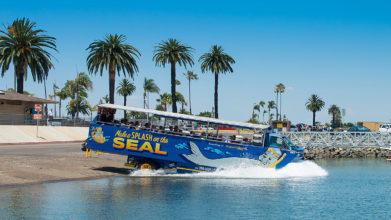
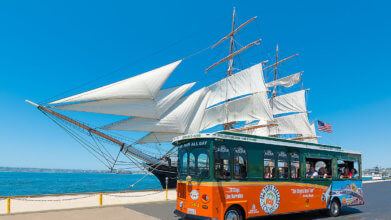
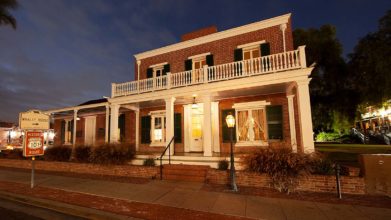
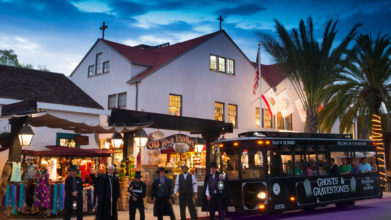
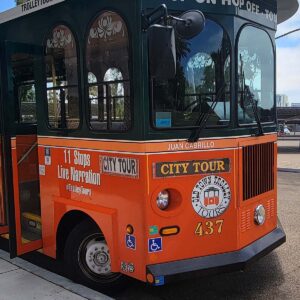 Juan Cabrillo
Juan Cabrillo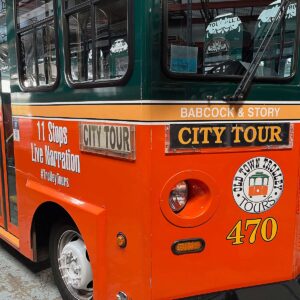 Babcock & Story
Babcock & Story Dr. Jonas Salk
Dr. Jonas Salk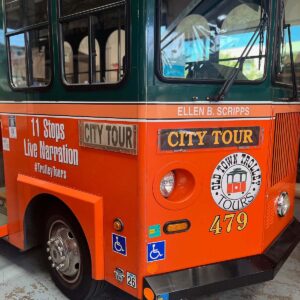
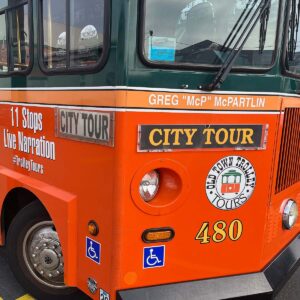 Greg “McP” McPartlin
Greg “McP” McPartlin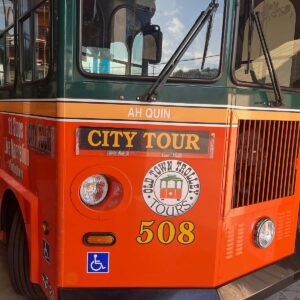 Ah Quin
Ah Quin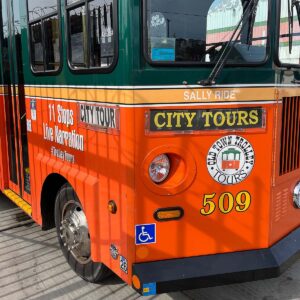 Dr. Sally Ride
Dr. Sally Ride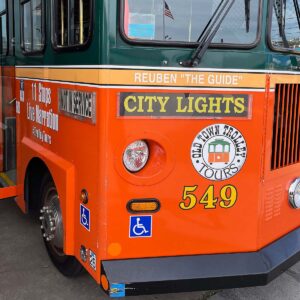 Reuben ‘The Guide’
Reuben ‘The Guide’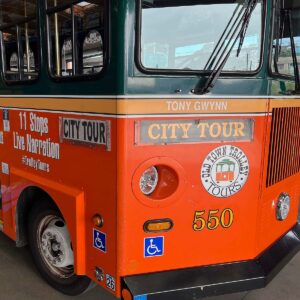
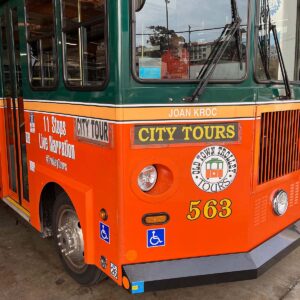 Joan Kroc
Joan Kroc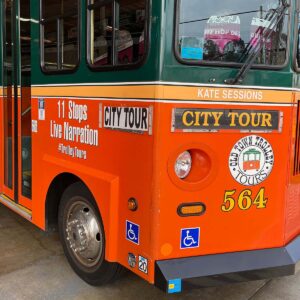 Kate Sessions
Kate Sessions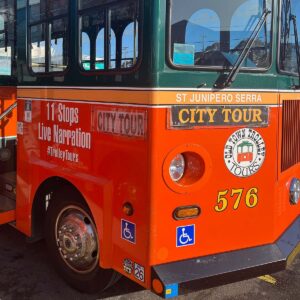 St. Junípero Serra
St. Junípero Serra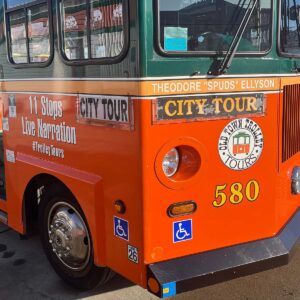 Theodore “Spuds” Ellyson
Theodore “Spuds” Ellyson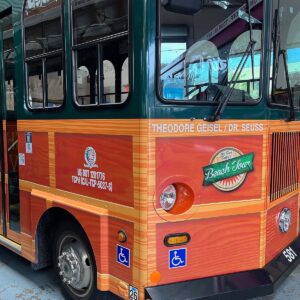 Theodor Geisel / Dr. Seuss
Theodor Geisel / Dr. Seuss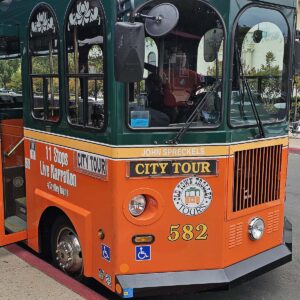 John D. Spreckels
John D. Spreckels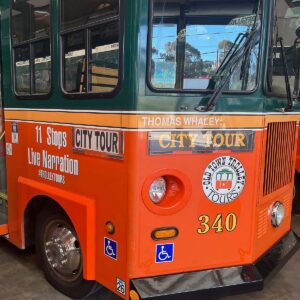 Thomas Whaley
Thomas Whaley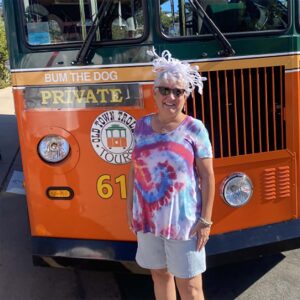 Bum the Dog
Bum the Dog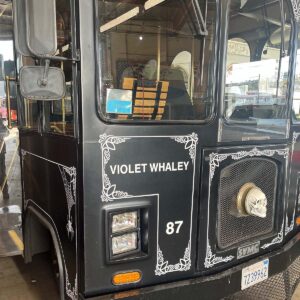
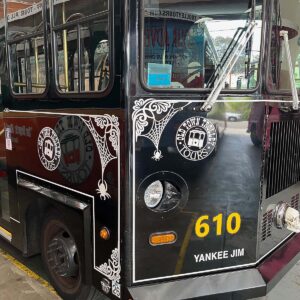 Yankee Jim
Yankee Jim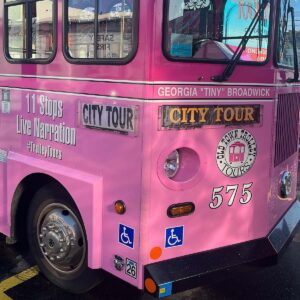 Georgia “Tiny” Broadwick
Georgia “Tiny” Broadwick